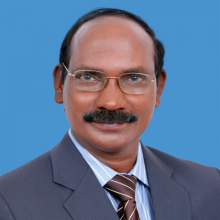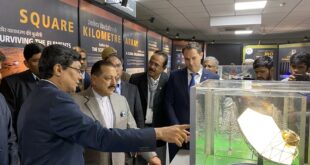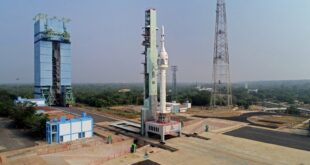
The Indian Space Research Organisation (ISRO) is aiming for the first crewed Gaganyaan human spaceflight mission to take place in December 2021.
Following the Indian government’s recent allocation of U.S.$1.4 billion for the Gaganyaan mission, ISRO has revealed how much of this budget boost will be spent in achieving an Indian human presence in space.
In an interview with The Times of India, ISRO’s chairman, Dr. K. Sivan, said that while a number of issues are taking shape in bringing Gaganyaan to fruition, there are a number of decisions – such as the number of astronauts that will be launched in the first mission – that are being deferred until a later date.
“The endeavour is to build capacity for three people and seven days. But since this is the first mission, we will have to see how many we can send. Those decisions will be made later,” Dr. Sivan told The Times of India.
ISRO has created a Human Spaceflight Centre (HSC) that will be headed by one of its most senior scientists, Unnikrishnan Nair, with R. Hutton being appointed as the Project Director for the Gaganyaan programme.
The main focus in the near-term, and accounting for by far the biggest portion of the additional U.S.$1.4 billion budget boost for ISRO, is the task of human-rating the Geo-Synchronous Launch Vehicle (GSLV) Mk. III rocket, its associated launch infrastructure, the crew capsule, and other safety capabilities in time for not just the crewed launch in December 2021, but also the unmanned test launches in December 2020, and in June or July 2021.
This means that ISRO needs to ensure that three human-rated GSLV Mk. III launch vehicles and the infrastructure and redundancy capabilities required to support their launch and recovery are ready, and this is expected to account for at least fifty percent of the allocated U.S.$1.4 billion.
“We have to build three sets of rockets, crew and service module for the project, and all of them have to be human-rated. Although I don’t have the exact break-up of the figures at this moment, building three GSLV-MK III launch vehicles and the other modules and conducting various human-rating tests will definitely use about 50% of the budget,” Dr. Sivan said.
Regarding the astronauts and their selection, Dr. Sivan said that a significant part of the remaining U.S.$1.4 billion budget will be used to set up a number of astronaut training centres.
“There is still some things that need to be done, and this aspect of the project will use up about 10% of the budget cleared for the human mission,” Dr. Sivan added.
As things stand, ISRO hopes to launch three astronauts into orbit for about seven days on the first Gaganyaan mission, though this could be revised as the December 2021 launch date gets nearer. Dr. Sivan did indicate, however, that the first astronauts will be selected from a pool of 30 individuals.





